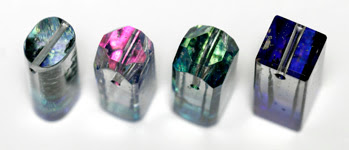Pâte de Verre, or glass paste, is a kiln-forming technique in which frits and glass powerders are packed into molds and heated until the glass melts together. The result is a bead with a translucent, velvet-like appearance ~ an effect that is unattainable in beads made on a torch. Pâte de Verre was frequently used in Art Nouveau jewelry. The designs that result from the technique are often compact, with only slightly raised surface decoration.
art by: Perihan Tufan
art by: Kristina Logan
"Seasonal Transitions" by: Amanda Taylor





























